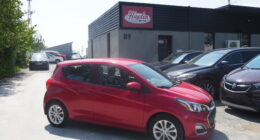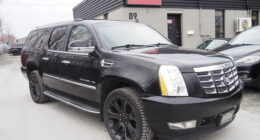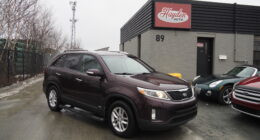Pay Cash or Finance A Used Car in Canada?

Deciding whether to pay cash or take out an auto loan depends on more than just your current bank balance. Whether paying cash or financing a used car, smart buyers check out market conditions and outlooks as well. This process starts well before they even start looking for their next set of wheels. The auto financing specialists at Hayden Auto Loans can lay out the upsides and downsides of cash and credit in our post-pandemic world. This lets you make the best decision for your personal finances – plus an innovative third option that blends the best of both worlds.
Weighing the Benefits of Paying Cash for a Pre-Loved Car
Are you among the lucky few with thousands of dollars stashed away? It might seem obvious for you to slap down the cash for your next set of wheels, with no need to pay interest rates. However, before writing out that multi-zero bank cheque, smart buyers consider the full range of their options:
- Instead of investing heavily in a depreciating asset (like an automobile), are there other opportunities to grow your funds (stock markets, government bonds, rental properties, currency exchanges, artworks, NFTs)?
- Could some of this amount be invested more effectively elsewhere in your lifestyle (education, travel, home improvements)?
- Is your emergency fund equivalent to three to six months (and preferably a year) of either your monthly expenses or income?
Advantages of Auto Financing
Although purchasing a second-hand car in instalments lacks the flash and excitement of a cash buy, this kind of transaction forces you to stand back and examine your current and expected financial status. Your income may plummet overnight, while family needs and preferences shift constantly. At the same time, innovative technologies and new laws are reshaping the market and opening up amazing possibilities.
So if you opt for financing, stick to a monthly repayment that slots neatly into your budget. This leaves plenty of room for all those extra car-related expenses: parking, fuel, insurance, road tax, maintenance, and repairs. The smartest approach is to decide exactly how much you want to pay out each month on your car loan. Then you can apply for pre-approval before you even start browsing through used-car lots. If you’re not sure how to set your parameters and get pre-approved for your loan, ask a financing specialist at Hayden Auto Loans.
Getting the Best of Both Worlds
For many used-car buyers, combining these two approaches is the best way to stay liquid while keeping loan costs low. A healthy down payment of 20% (or more) can often lead to lower interest rates and shorter terms. Another major advantage is that buying part cash/part financed is a sure way to avoid an underwater loan. This is when the vehicle value falls below the amount outstanding on the loan, so you owe more than the resale value. This negative equity situation is more common with longer-term loans. It can be a real problem if you need to sell your car, or trade it in, and the unluckiest borrowers may have to make up the difference out of pocket.
Bottom Line: The bigger your down payment, the smaller your loan, which is positive. But you should weigh these savings against lost opportunity costs, as well as the risks of dipping into your emergency savings.
Looking For Quick & Easy Financing?
We know how to find the best vehicle for your situation, and have you leave the lot with a smile on your face.
Apply now!


